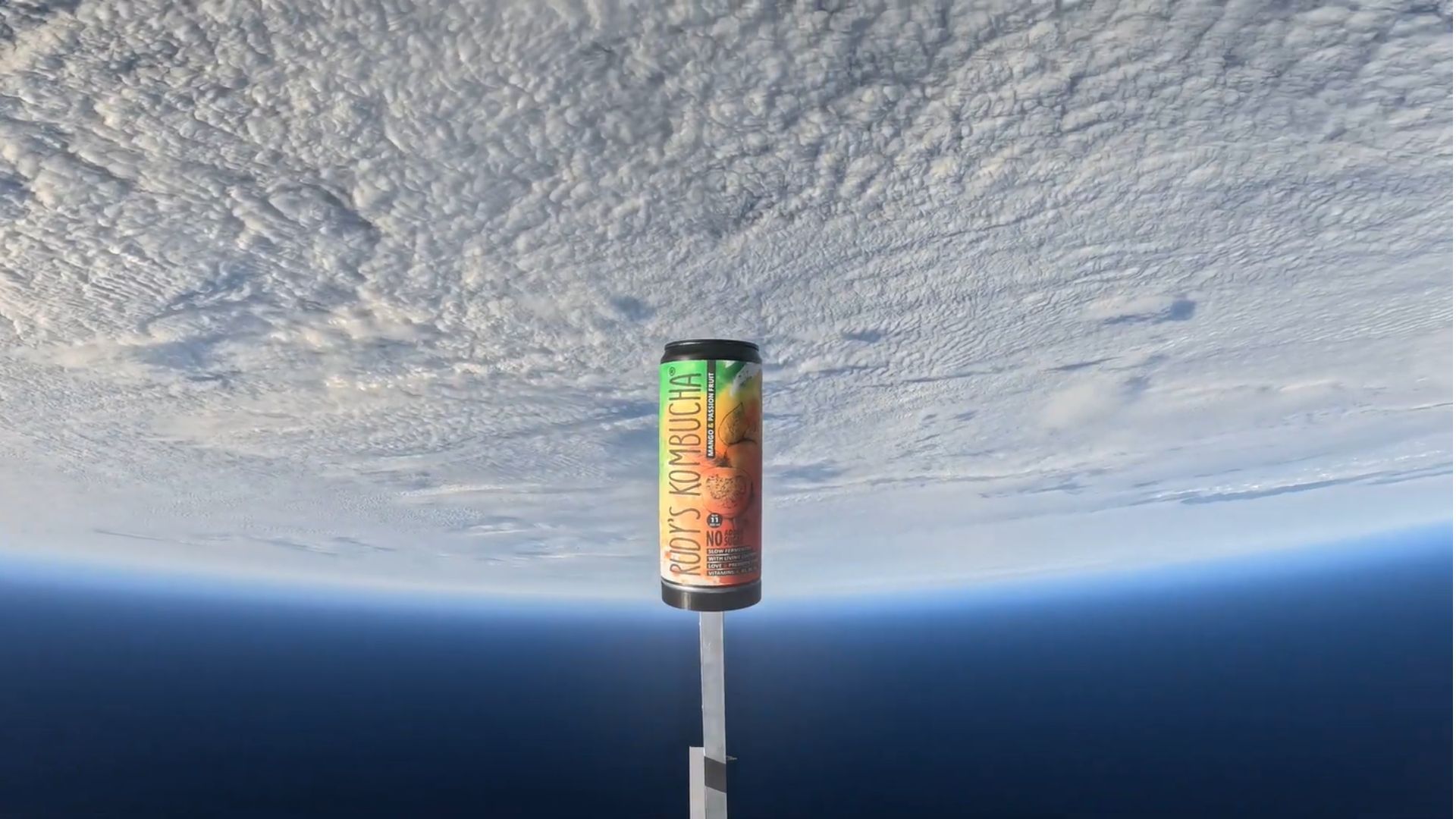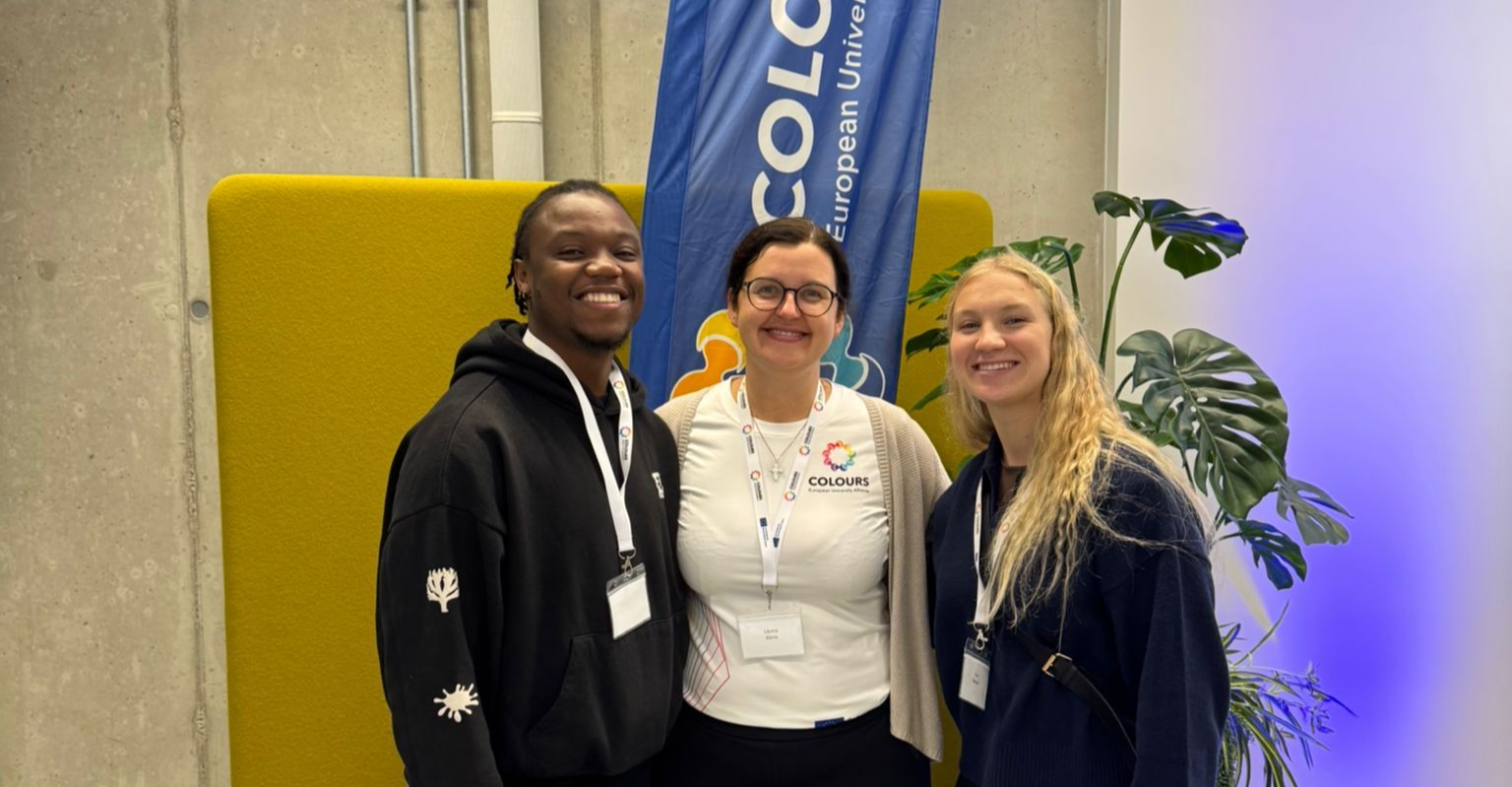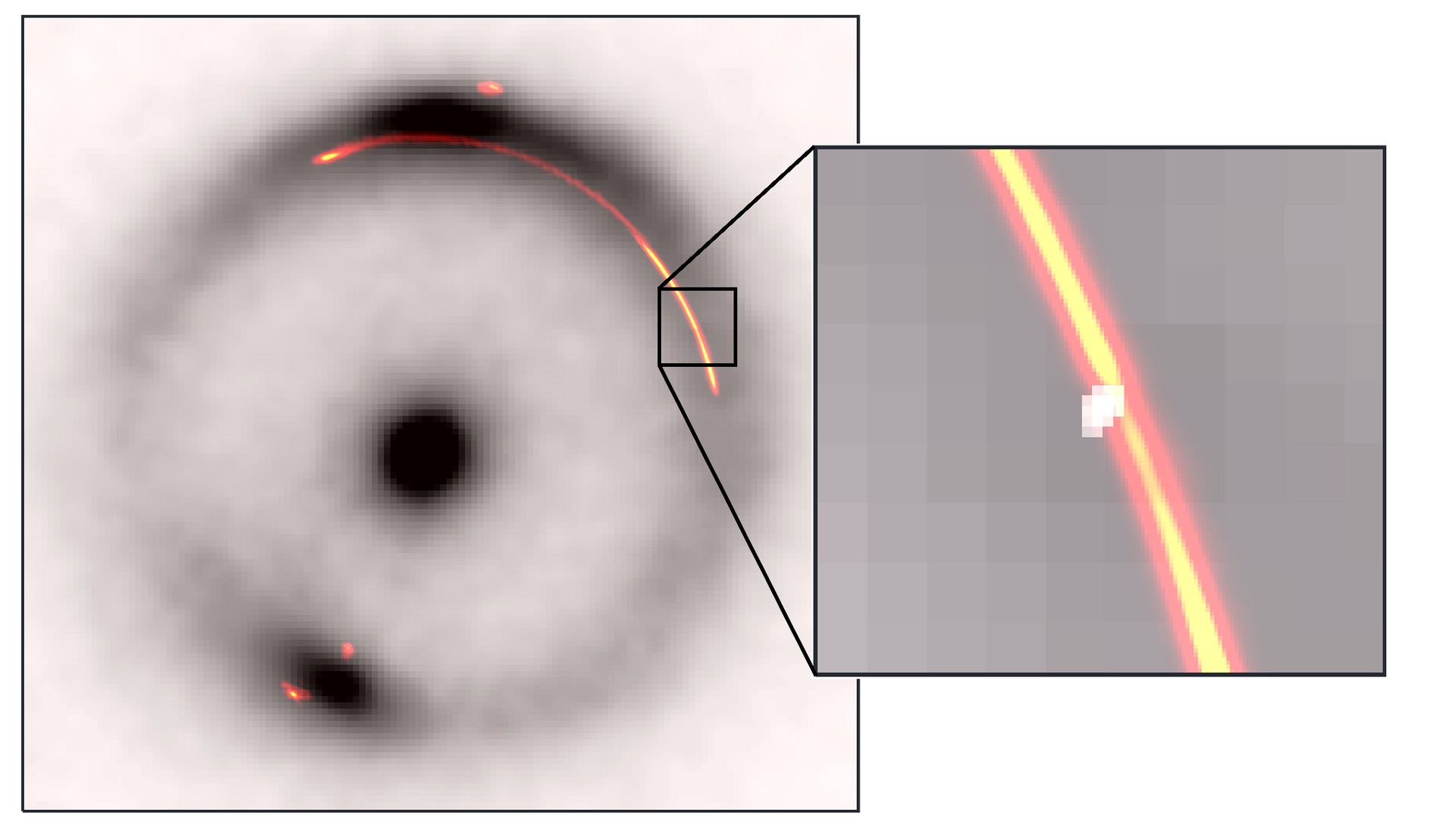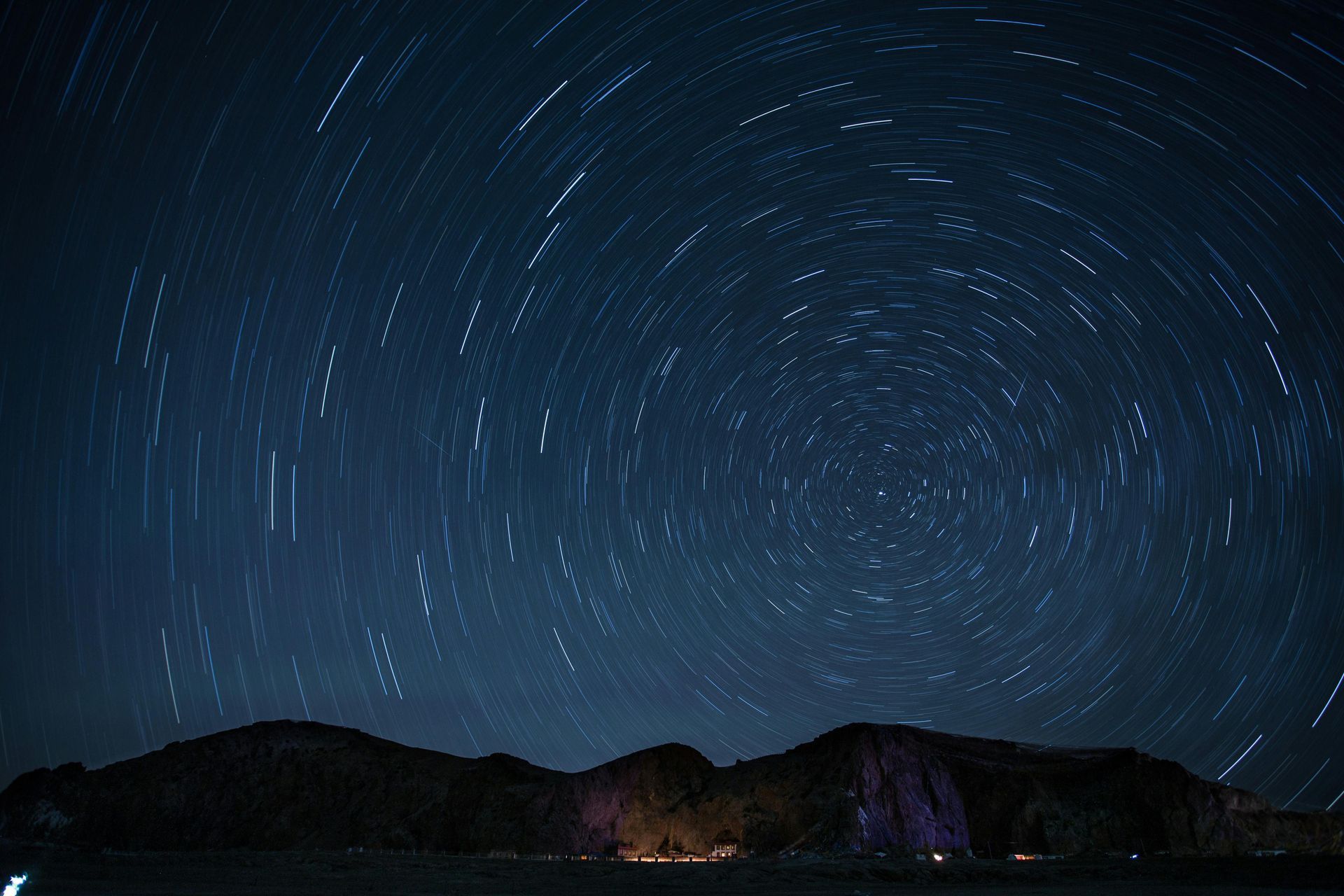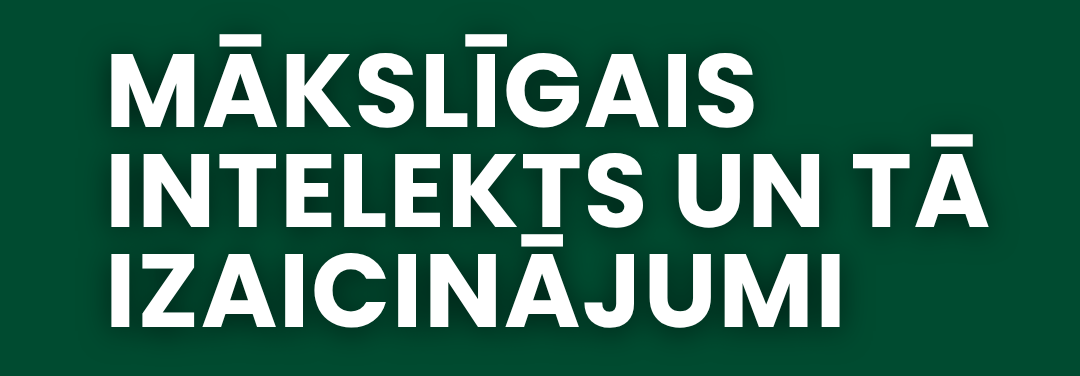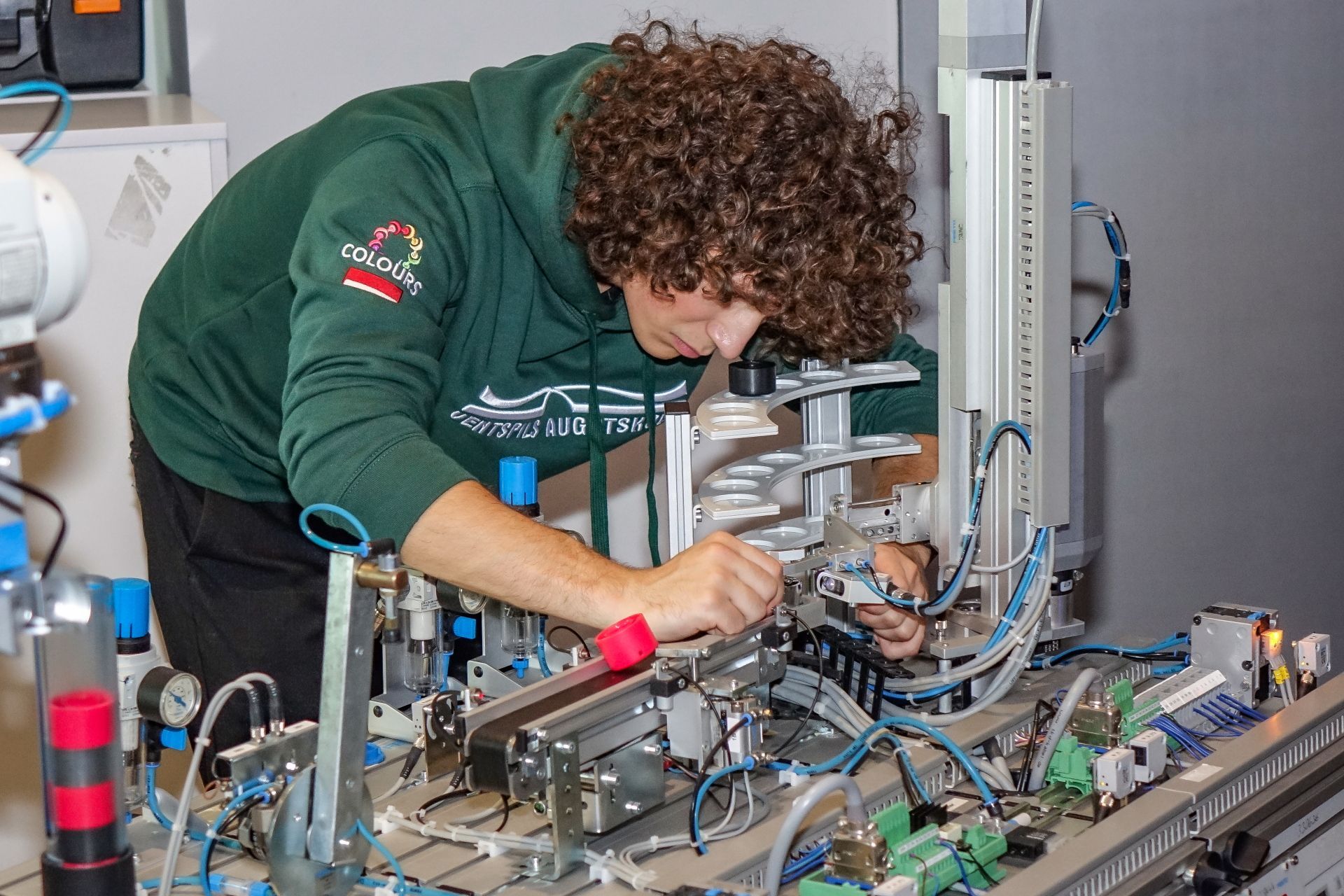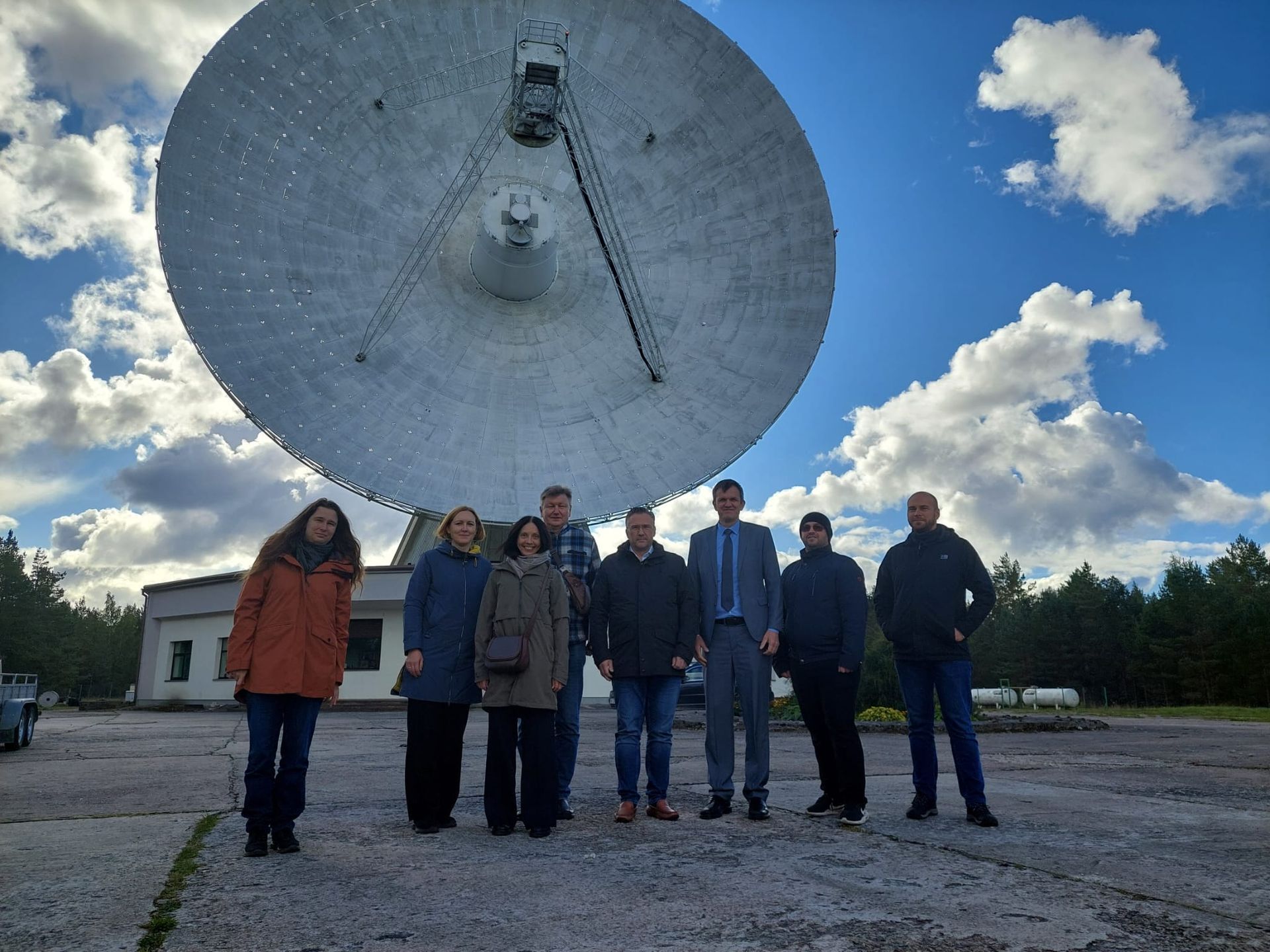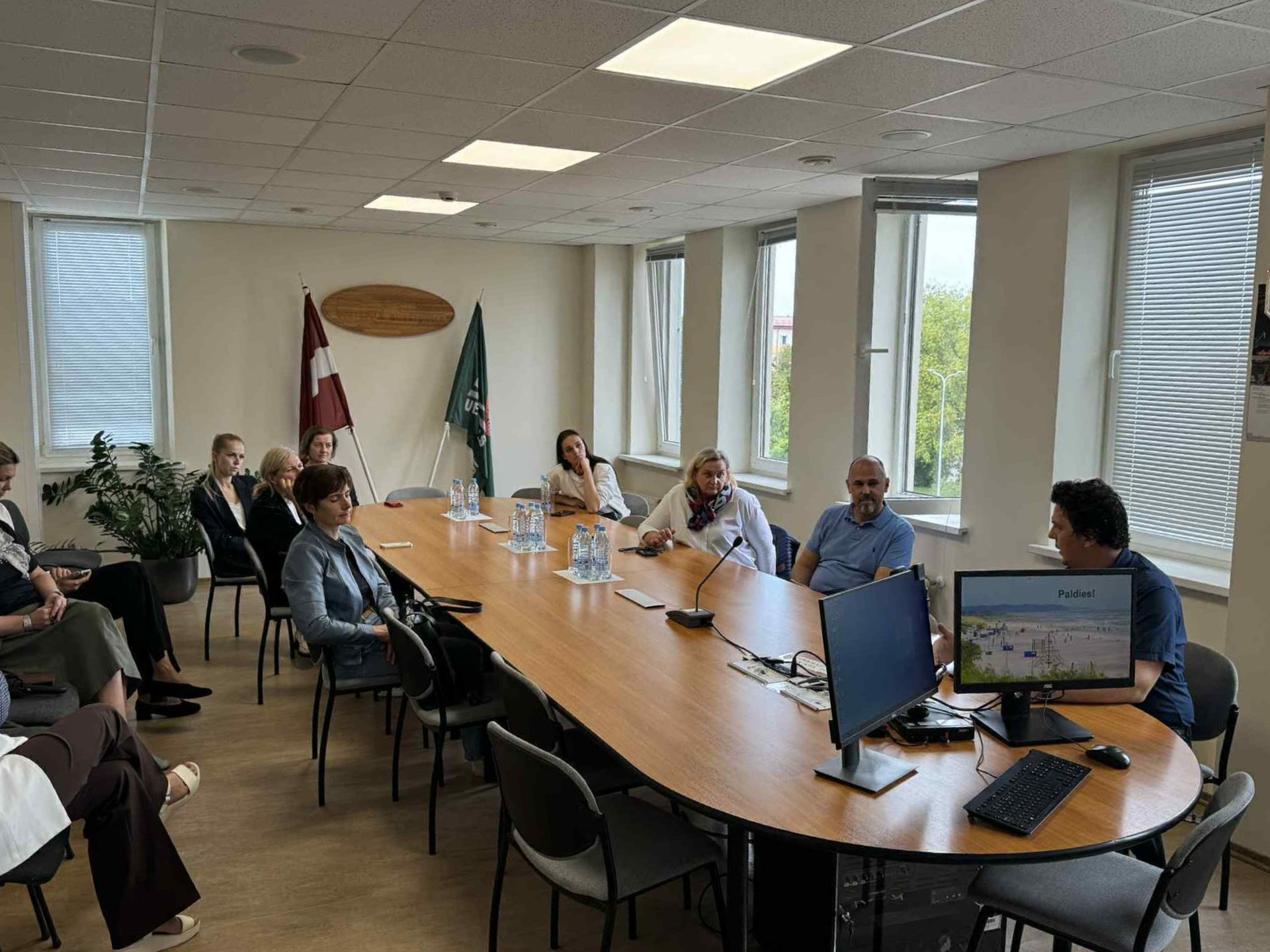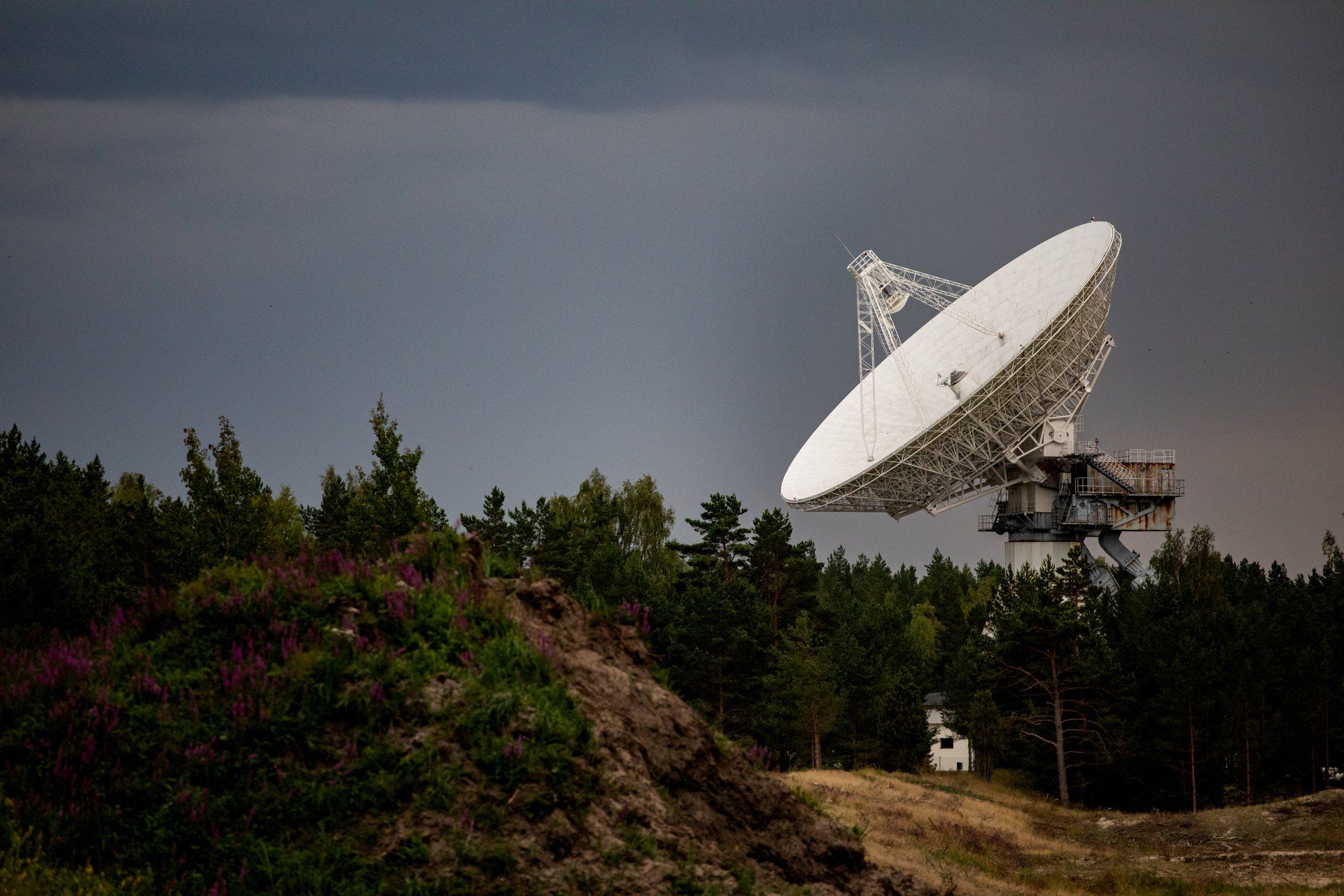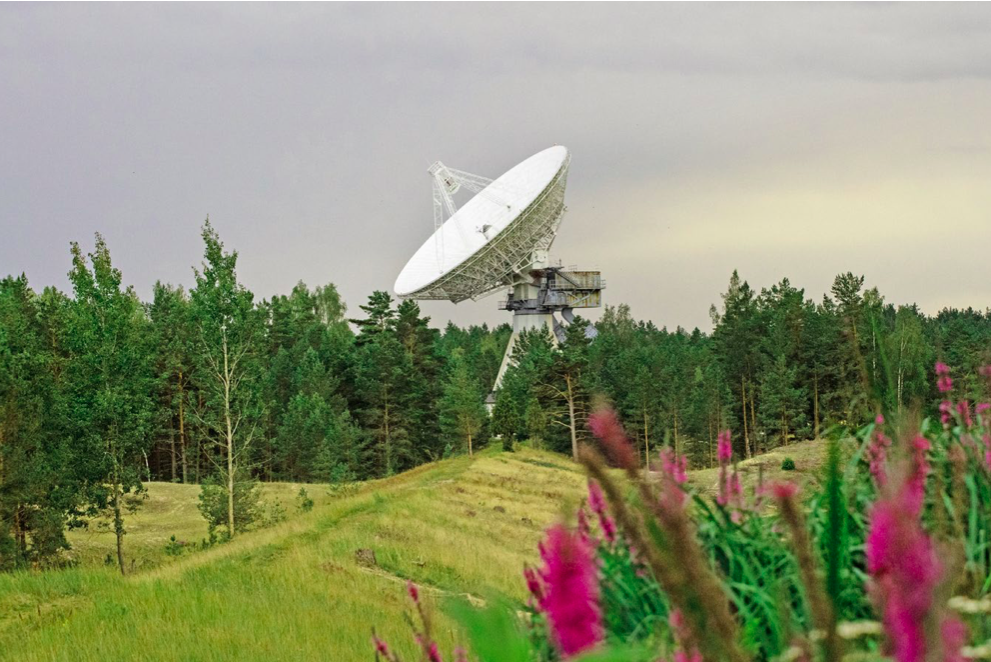Ventspils International Radio Astronomy Centre
Engineering Research Institute Ventspils International Radio Astronomy Centre (ERI VIRAC) of Ventspils University of Applied Sciences (VUAS) is a science education center specializing in the implementation of high-quality future research services in the field of space technology and signal processing.
The video was shot by a creative group led by film director Juris Pakalnītis.
The strategic goal of ERI VIRAC is to become a major science centre in observational radio astronomy and related theoretical astrophysics, a global provider of research in space physics and services in space technology, based on an internationally competitive, balanced, and sustainable team of researchers. Research and services employ an internationally competitive infrastructure for astronomical observations and deep-space communications.
VIRAC operates a radio telescope site in Irbene, equipped with two completely rotatable, parabolic antennas RT-32 and RT-16, as well as a Low-frequency array (LOFAR) station.
Insight into history
- The Irbene radio antenna complex was founded on June 10, 1967, as a secret Soviet astronomy and communications center to spy on Western communications.
- VIRAC, was founded by the Latvian Academy of Sciences under the name Ventspils International Radio Astronomy Center on July 22, 1994, when the State Commission from the Russian Federation took over from the former Soviet Union, at the time of the transfer, the Russian Federation’s military unit at Irbene, in the Ventspils region (military object “Star”).
- Two years later, VIRAC was reorganized as a state-owned scientific non-profit organization, a limited liability company.
- On December 16, 2004, VIRAC was incorporated into the Ventspils University College (now Ventspils University of Applied Sciences – VUAS) as the VUAS Scientific Institute, which was registered on November 25, 2005, in the Register of Scientific Institutions of the Republic of Latvia.
- On March 1, 2010, VIRAC added a second VUAS scientific institute – the Engineering Research Center (IPC), replacing the name of the institute with the current one.
- On March 18, 2010, the VIRAC as a VUAS unit was re-registered in the Register of Scientific Institutions of the Republic of Latvia.
- In 2013, the VIRAC became a VUAS unit with its Scientific Council, whose activities are determined by the Senate of the VUAS.
- In 2016, VIRAC was admitted to the European Radio Astronomy Observation Network (EVN) and Latvia – JIV-ERIC.
- In 2019, VIRAC became a member of ILT.
- In 2021, VIRAC telescopes start to be used for practical, non-research purposes.
- In 2025, VIRAC provides first services to spacecraft missions in faraway space.
ERI VIRAC Scientific Council
- Juris Freimanis (chair), leading researcher
- Artis Aberfelds, leading researcher
- Vairis Caune (external, VUAS Faculty of Information Technologies)
- Juris Kalvāns, leading researcher
- Matīss Maltisovs, leading researcher
- Ivars Šmelds, leading researcher
- Juris Žagars, visiting leading researcher
Astronomy and Astrophysics Department
Galaxy
Studies of the interstellar medium (ISM) and circumstellar envelopes (CE). The investigations deepen knowledge on the circulation of cosmic matter in our Galaxy and the properties of matter and processes in extreme conditions in deep space. A major VIRAC research direction is observations of galactic masers - laser-like radiation in the radio wavelength range. Natural cosmic masers primarily occur in massive star-forming regions. Masers of methanol CH3OH and excited hydroxyl OH* are regularly monitored and analyzed with VIRAC radio telescopes in single antenna mode, as well as with a single-baseline interferometer consisting of RT-16 and RT-32. Formaldehyde H2CO masers have also been observed. The monitoring is supplemented by mapping of the astrophysical maser sources with the European large-scale radio interferometry network EVN. Theoretical aspects of ISM and CE are addressed by numerical modelling studies in astrochemistry, studying the accumulation of ices on dust grains in starless and star-forming dense interstellar clouds, often observed in the spiral arms of our Galaxy. Prebiotic organic synthesis occurs in these ices that could be essential for the emergence of life on Earth. Hence, we are also interested in the chemical aspects of the formation of stars, starting in dark cloud cores and up to the appearance of a protoplanetary disk. The above major topics are supported by investigations of radiation transfer in the gas-dust CEs of young protostars and evolved asymptotic giant branch stars.
Solar system.
Systematic radio astronomical observations of solar active regions (sunspots and their groups) are performed with the VSRC radio telescope RT-32 in the microwave domain. Solar radiation maps at different frequencies with different (left and right circles) polarizations have been created with the help of self-built instrumentation. Research in solar physics explores the origin of solar wind originating from solar active regions, as well as magnetohydrodynamic waves and oscillations in the hot solar corona. A separate direction studies small solar-system bodies, focusing on comets that are interesting objects for spacecraft missions and are capable of maser emission. This emission is weak, prompting advances in data processing, and requires technological telescope improvements. An emerging field is investigating processes in the Earth's ionosphere, including single-station observations with LOFAR.
High-energy and extragalactic astronomy. Active galaxies include quasars, radio galaxies, Seyfert galaxies, blazars, Markarian galaxies, and other objects with galactic nuclei hosting accreting supermassive black holes. With the VIRAC radio telescope RT-32, the variability of active galaxies has been studied. The characteristic time of variability cannot be significantly longer than the time (about a day) during which a signal traveling at the speed of light can cross the emitting area. Such observations can help to explain the mechanisms of galactic nuclei variability. Other high-energy astrophysical phenomena studied include fast radio bursts, elementary particle physics, and processes in accretion disks around stellar-mass black holes.
- Juris Kalvāns
Dr.phys., Leading researcher, Head of department
juris.kalvans[at]venta.lv
- Juris Freimanis
Dr.phys., Leading researcher, assistant professor
jurisf[at]venta.lv
- Ivars Šmelds
Dr.phys., leading researcher
ivarss[at]venta.lv
- Jānis Šteinbergs
Mg.sc.comp., Research assistant, PhD student
janis.steinbergs[at]venta.lv
- Gints Jasmonts
Mg.sc.comp., Research assistant, PhD student
gints.jasmonts[at]venta.lv
- Karina Šķirmante
Mg.sc.comp., Researcher, lecturer, PhD candidate
karina.skirmante[at]venta.lv
- Kristaps Veitners
Mg.phys., Research assistant
kristaps.veitners[at]venta.lv
- Jesus Cazares Montes
PhD, Visiting leading researcher
jesus.cazares[at]venta.lv
- Aija Kalniņa
Mg.phys., scientific assistant, PhD student
aija.kalnina[at]venta.lv
- Boris Ryabov
Dr.phys., Leading researcher
borissr[at]venta.lv
- Dmitrijs Bezrukovs
Dr.phys., leading researcher
dmitrijs.bezrukovs[at]venta.lv
- Vladislavs Bezrukovs
Mg.sc.ing., Researcher, PhD candidate
vladislavsb[at]venta.lv
- Artis Aberfelds
PhD, leading researcher, postdoc
artis.aberfelds[at]venta.lv
- Anete Egliene
B.sc.phys., Astronomy technician
anete.egliene[at]venta.lv
- Valery Nakariakov
PhD, Visiting leading researcher
V.Nakariakov[at]warwick.ac.uk
- Ross Burns
PhD, Visiting leading researcher
rossburns88[at]googlemail.com
- Dmitrii Kolotkov
PhD, Visiting leading researcher
D.Kolotkov.1[at]warwick.ac.uk
- Artem Sukharev
PhD, Visiting leading researcher
magister_phys[at]yahoo.com
- Anatolijs Popovs
Dr.phys., Visiting leading researcher
Sihui Zhong
PhD, Visiting researcher
S.Zhong3[at]exeter.ac.uk
Electronics and Satellite Technology Department
The Electronics and Satellite Technology Department (ESTD) specializes in applied engineering research, with a strong focus on energy systems. Our work encompasses the full development cycle—from conceptual design and mathematical modelling to prototype production and patenting of innovative technologies.
ESTD researchers actively contribute to scientific literature, including the publication of monographs. Complex engineering challenges, such as behaviour of materials under stress, are tackled using advanced numerical modelling techniques.
Mathematical modelling and software algorithms are applied for solving real-world problems across diverse fields, including smart engineering systems, intelligent building infrastructure, satellite communications, cybersecurity, economics, and medicine.
- Matīss Maltisovs
PhD, Leading researcher
matiss.maltisovs[at]venta.lv
- Valērijs Bezrukovs
Dr.sc.ing., Leading researcher
valerijs.bezrukovs[at]venta.lv
- Viktors Gopejenko
Dr.sc.ing., Leading researcher
viktors.gopejenko[at]venta.lv
- Marina Koņuhova
Dr.sc.ing., Visiting leading researcher
marina.konuhova[atventa.lv
- Juris Žagars
Dr.habil.phys., Visiting leading researcher
juris.zagars[at]venta.lv
- Manfreds Leontijs Šneps-Šneppe
Dr.habil.sc.ing., Visiting leading researcher
manfreds.sneps[at]venta.lv
- Svetlana Polukoško
Dr.phys., Visiting leading researcher
svetlana.polukosko[at]venta.lv
Engineering and Technical Operations Group
The main tasks of the Engineering and Technical Operations Group (ETO):
- Operation control, maintenance, and repair of RT-32 and RT-16 radio telescopes’ kinematic mechanical drive systems. Cleaning, repairing, and painting of the parabolic antenna’s supporting grid element and inspection of their technical condition. Maintenance and repair of RT-32 and RT-16 drive control systems, their operational compliance control, and improvement of functionality.
- Automation of observations of radio astronomical radiation meeting the requirements of the European VLBI network (EVN). Configuration of field system components; the digitalisation, formatting, storage, and transferring of radio astronomical data. The development of observation procedure scripts and compliance with EVN requirements and provisions. The provision of automated observations of galactic masers and active galactic cores in a single-antenna mode.
- Operation, control, repair, and reception of RT-32 and RT-16 cryogenic receivers. Maintenance of low-temperature cryostats and liquid He systems. The calibration of radio telescopes’ antenna parameters and receivers. The calibration and development of L-band and S-band receivers.
- Maintenance of radio telescope complex power supply system. Maintenance, operation control, and technical modernisation of the automated electrical energy storage system established for the continuous operation of RT-32 and RT-16.
- Maintenance and development of computer hardware and data transmission network. Maintenance, configuration, and repair of radio telescopes’ drive control, receiver control, weather station, and users’ computer systems. The maintenance of data transmission local and global network access devices and data safety systems.
- Provision of radio telescope operator services. Conducting radio astronomical observations according to the approved observation schedule, signal registration, data compliance control, and data storage. Observations are conducted 24 hours a day, seven days a week.
- Surveillance of Irbene territory. The continuous physical presence of personnel in the Irbene complex, surveillance of the territory, and control of critical infrastructure facilities.
- Coordination of tourism and visitors. Creating and replenishing the exhibition with additional features. Coordination of excursions, supervision of guides, and accounting of revenue.
Artūrs Orbidāns
M.Sc., Acting Head of Department, Electronics Engineer
arturs.orbidans[at]venta.lv
Dr. Jānis Trokšs
Dr.phys., Visiting Leading Researcher
janis.trokss[at]venta.lv
Mārcis Bleiders
Mg.sc.ing., Electronics Engineer, guest lecturer
marcis.bleiders[at]venta.lv
Agris Bērziņš
Mg. oec., Senior Mechanical Engineer
agris.berzins[at]venta.lv
Tatjana Dāvida
Technical Specialist
tatjana.davida[at]venta.lv
Roksolana Amarova
Junior Electronics Engineer
roksolana.amarova[at]venta.lv
Raitis Raikstiņš
Senior Specialist
raitis.raikstins[at]venta.lv
Arnis Bērziņš
Technical Specialist
arnis.berzins[at]venta.lv
Māra Klausa
Technical Specialist
mara.klausa[at]venta.lv
Roberts Rasmanis
Astronomy Technician
roberts.rasmanis[at]venta.lv
Zigurds Putniņš
Technical Specialist
zigurds.putnins[at]venta.lv
Kristaps Blumbergs
Junior Electronics Engineer
kristaps.blumbergs[at]venta.lv
Rodrigo Laurinovičs
Junior Electronics Engineer
rodrigo.laurinovics[at]venta.lv
Guntis Gailums
Junior Electronics Engineer
guntis.gailums[at]venta.lv
Andrejs Andrievs Dzelme
Junior Electronics Engineer
andrejs.dzelme[at]venta.lv
Lita Bērziņa
Caretaker
lita.lapina[at]venta.lv
Matīss Purviņš
Developer
s22purvmati[at]venta.lv
Ruslans Golubevs
Developer
s21golurusl[at]venta.lv
Kristaps Felzenbergs
Visiting researcher
kristaps.felzenbergs[at]venta.lv
Nansija Jotkus
Visiting scientific assistant
nansija.jotkus[at]venta.lv
Services
Observations with VIRAC radio telescopes
Proposals for the use of the telescopes for scientific and applied (commercial) tasks have to be electronically submitted to VIRAC with the application template.
Applications for long-term (more than one quarter) work series for the next calendar year have to be submitted by December 1 each year. The decision is announced to the submitters by December 20. Applications for short and medium-term work series have to be submitted quarterly, each year, until December 10, March 15, June 15, and September 15. The decision is announced to the submitters within 10 working days.
Decisions on awarding or refusing observational time are made by the VIRAC Radio Telescope Time Allocation Commission. The decision of the Commission can be appealed to the VUAS rector within 5 days of the announcement of the decision. Following the “Regulation for employment of VUAS ERI VIRAC radio telescopes”, approved by VUAS Senate on June 21, 2017, a fee is applied for radio telescope employment. The fee may depend on the set of VIRAC services necessary for the proposal. Within the constraints of available budget funds, the cost can be fully or partially waived for the following observation proposals (in priority sequence):
- observations and other resultative works necessary for the fulfillment of EVN, JIV-ERIC, and other VUAS international commitments;
- observations and other resultative works in projects funded by the European Union if the outcome is expected to be published in high-impact journals and/or the research is conducted by the scientific personnel of VUAS;
- observations and other resultative works conducted or led by VUAS ERI VIRAC employees, attracted experts, consultants, if the work is financed by the state budget and/or Ventspils City Council by more than 50 % of the total amount;
- resultative works for projects and activities that ensure achieving VIRAC strategic aims, contribute new competence, or widen international cooperation;
- observations and other resultative works for maintaining the VUAS study process;
- if observations are conducted in the regime of short- or long-base interferometry network, involving telescopes RT-32 and RT-16 simultaneously.
All data obtained in business-related observations are commercial secrets for at least one year but no longer than five years, and they must not be disclosed to third parties without the customer's consent.
Computing with a high-performance computing cluster
Conditions and form of applications for computing tasks with VUAS IE VIRAC High Performance Computing cluster (HPC).
Applications for HPU use shall be submitted and addressed to the Director of VIRAC and shall be accepted within the following time limits.
- Applications for long-term computing tasks shall be submitted by 1 December of each calendar year, and the decision shall be taken by 20 December, respectively. That point also corresponds to VIRAC employees who are required to apply for their planned computing tasks for the calendar year.
- Applications for computing tasks for the following quarter shall be accepted by the 15th of the month following the previous quarter (15 December, 15 March, 15 June and 15 September).
The application shall be submitted as an electronic .docx, .doc, .odt, or .pdf file, Times New Roman font, character size not less than 10 points. The applicant shall attach a scanned confirmation (.pdf file) with his or her signature on the authenticity of the application. The application fields marked with an asterisk (*) are mandatory. If the applicant is not an employee of any organisation, it must be indicated in the “Organization name” field.
Conditions and application form (in Latvian).
Contacts
- Director
Mārcis Donerblics
E-mail: marcis.donerblics@venta.lv
- Chair of VIRAC scientific council:
Juris Freimanis, jurisf [at] venta.lv
- Chair of the VIRAC Radio telescope time allocation commission:
Juris Freimanis, jurisf [at] venta.lv
- On scientific astronomical matters, including student works, contact the head of VIRAC Astronomy and astrophysics department:
Juris Kalvāns, juris.kalvans [at] venta.lv
Excursions
Questions about excursions, tour prices, excursion offer, tour times: +37129230818
Office
9:00 - 17:00
Administration: +37163629656
E-mail
General issues,requests, offers.
VIRAC in Ventspils
Inženieru street 101,Ventspils, LV-3601
Phone +37163629656
E-mail virac@venta.lv
VIRAC in Irbene
VIRAC, Ventspils district. Ance parish., Irbene, LV-3601
Security/Guard +37163656081
Excursions
EXCURSION SEASON AT THE IRBENE COMPLEX ISFROM APRIL 1ST TO NOVEMBER 1ST
As of September 1, 2025, excursions will not be available due to technical reasons.
Activities included in the excursion:
- A walk AROUND radio telescope RT-32 in the territory of Irbene
- RT – 8 tower viewing and expositions about RT – 32 and RT – 16 during the USSR
- Viewing the “old” RT – 16 antenna next to RT – 8
- Walk through an underground tunnel
Book excursion at least 3 days before visiting!
Tourist service tariff:
- Excursion for a group of less than 10 people - 100 EUR
Individual prices (for a group of more than 10 people):
- Adults – 12 EUR
- Students, pensioners – 8 EUR
- For students, children from 6 years of age – 6 EUR
If you have decided to visit us send an e-mail to virac@venta.lv or call and apply for an excursion by phone +371 29230818
Rules to follow in the excursion:
- Excursion time is around 1,5-2 hours.
- Excursions are possible only with our guide.
- Excursions happen after a prior set appointment.
- Visitors have to follow the instructions of the staff.
- Visitors should switch off their mobile phones and other devices that broadcast in the radio frequency range or turn them on to “flight mode”.
Additional information
VIRAC is responsible for many of VUAS scientific publications and research projects.
VIRAC homepage (currently not updated, actual information is available on https://en.venta.lv/about-science-in-vuas )
Events and Highlights
